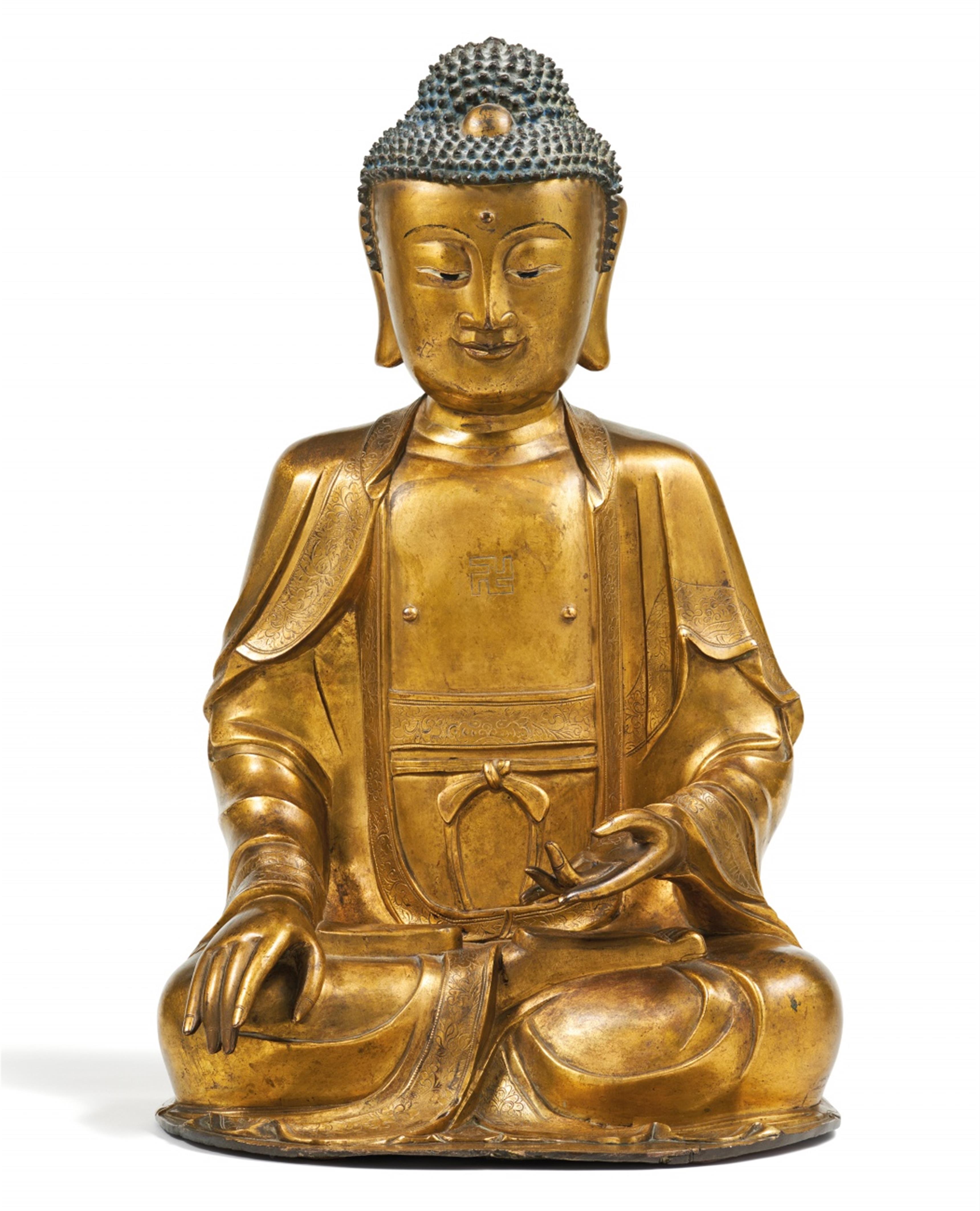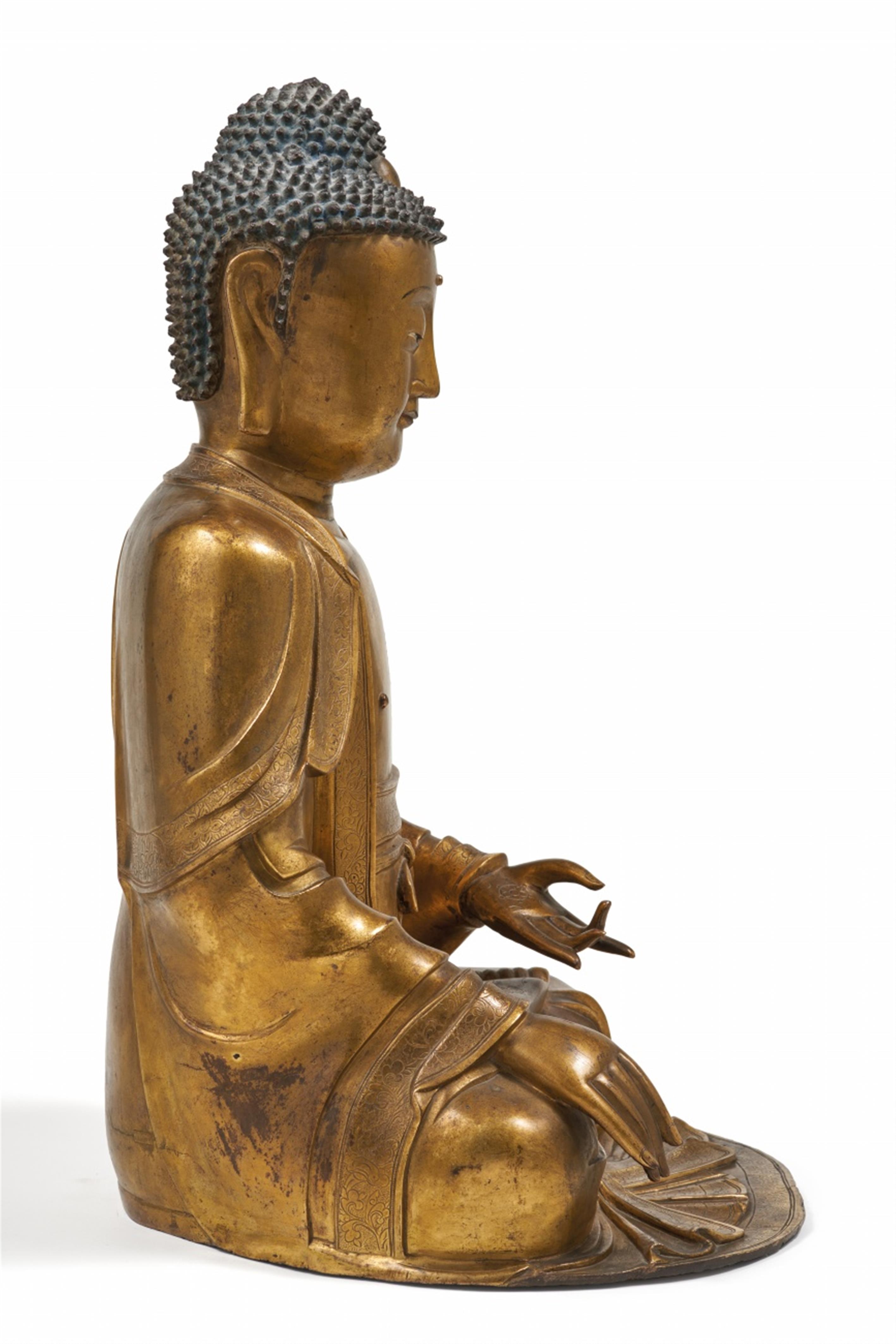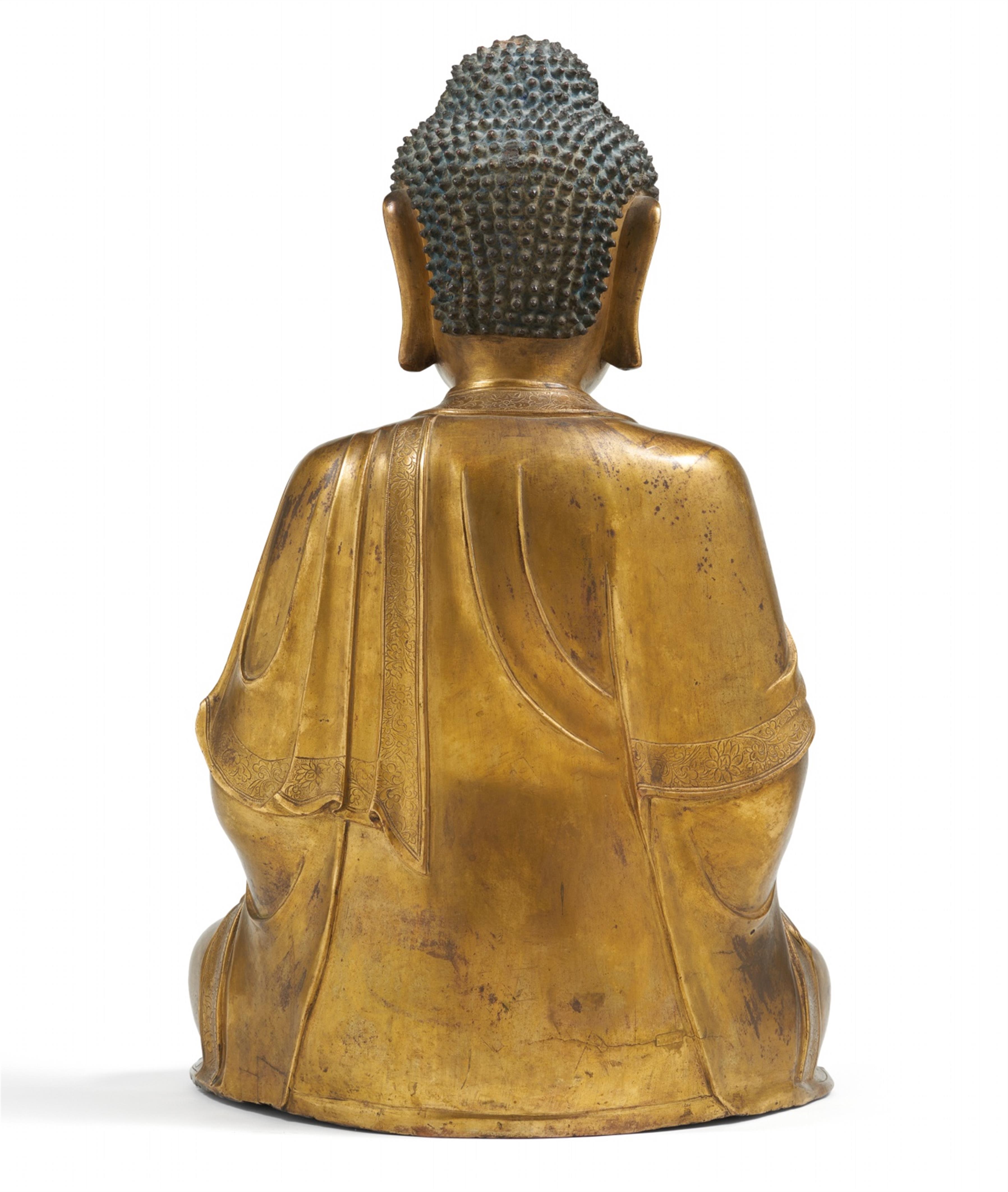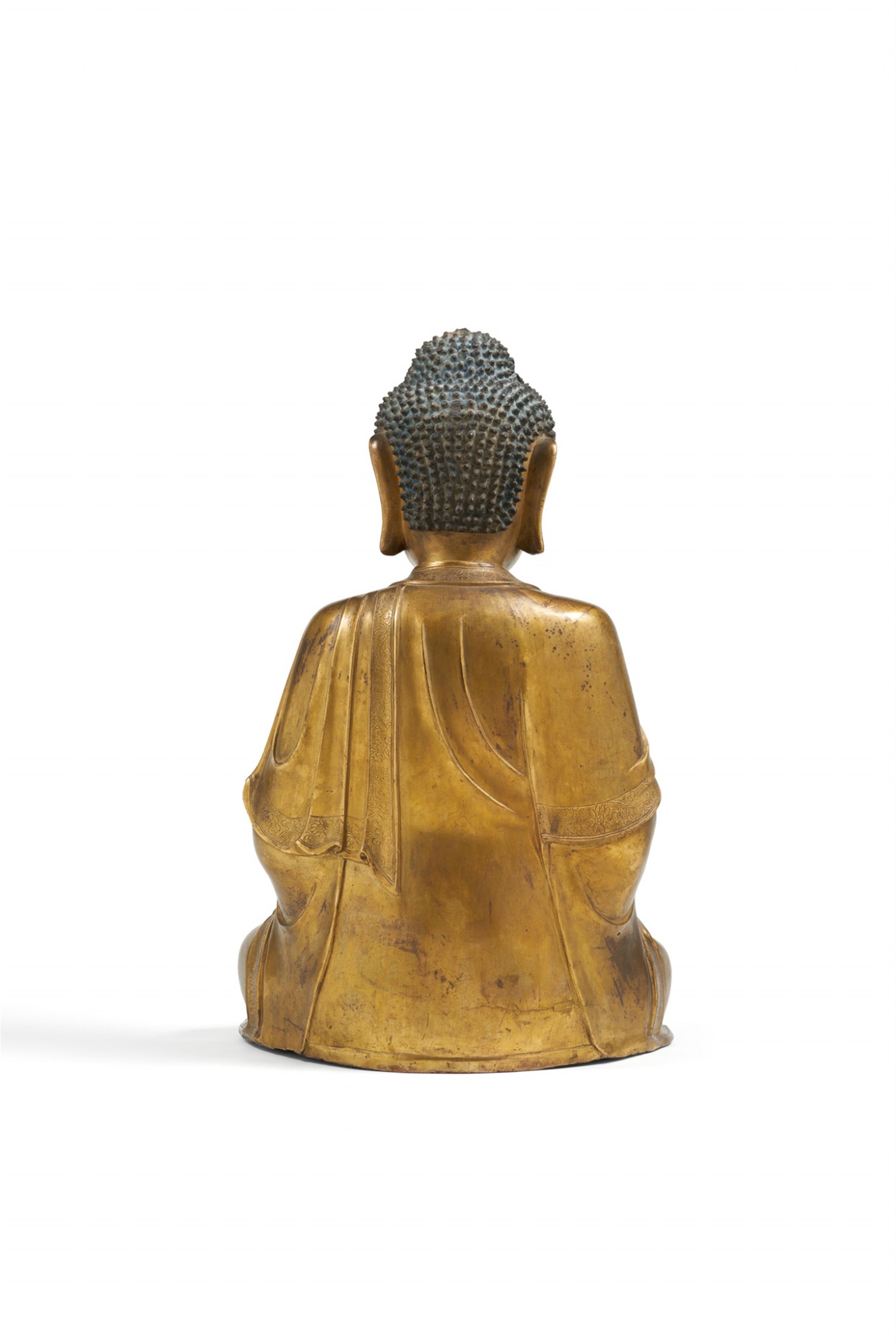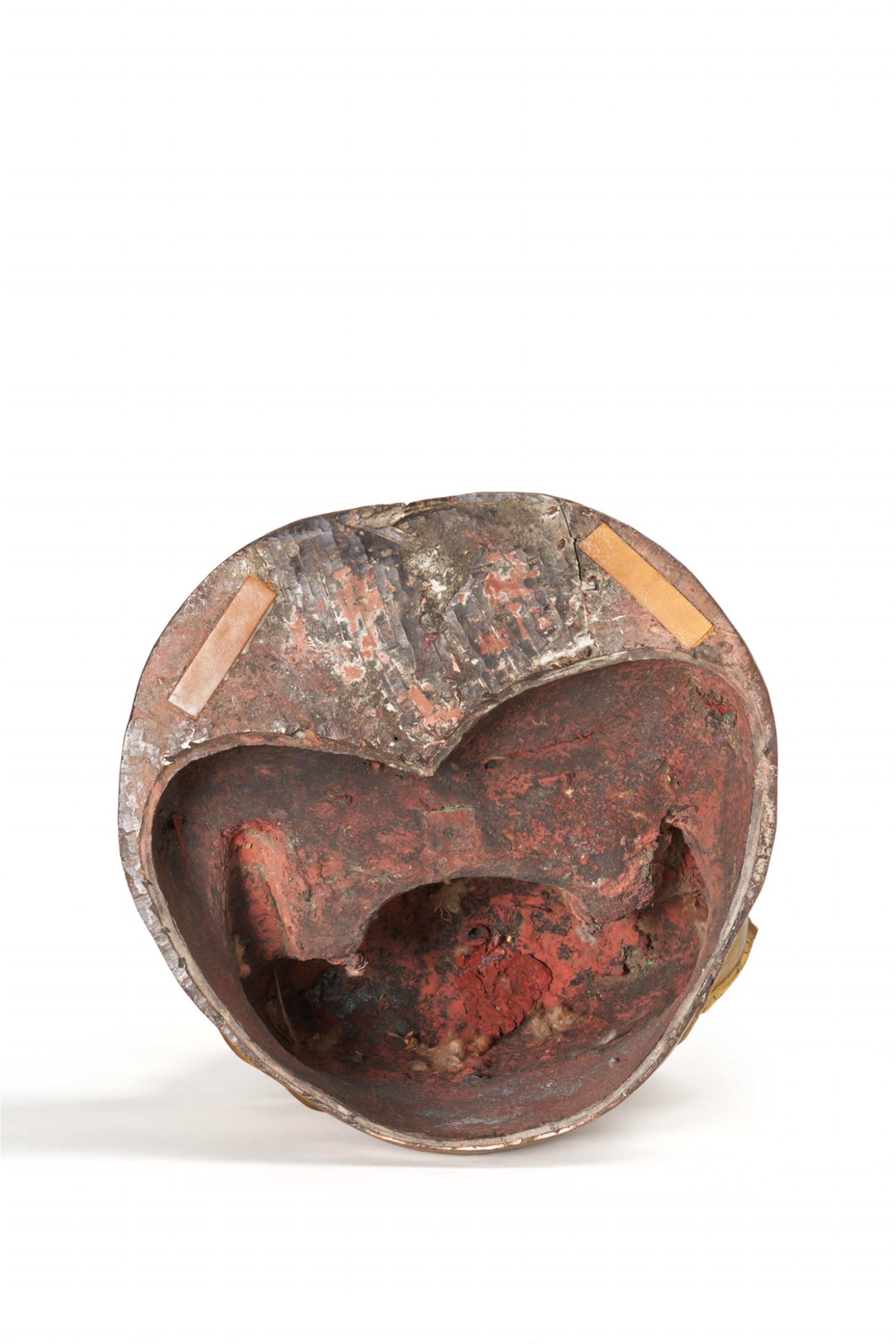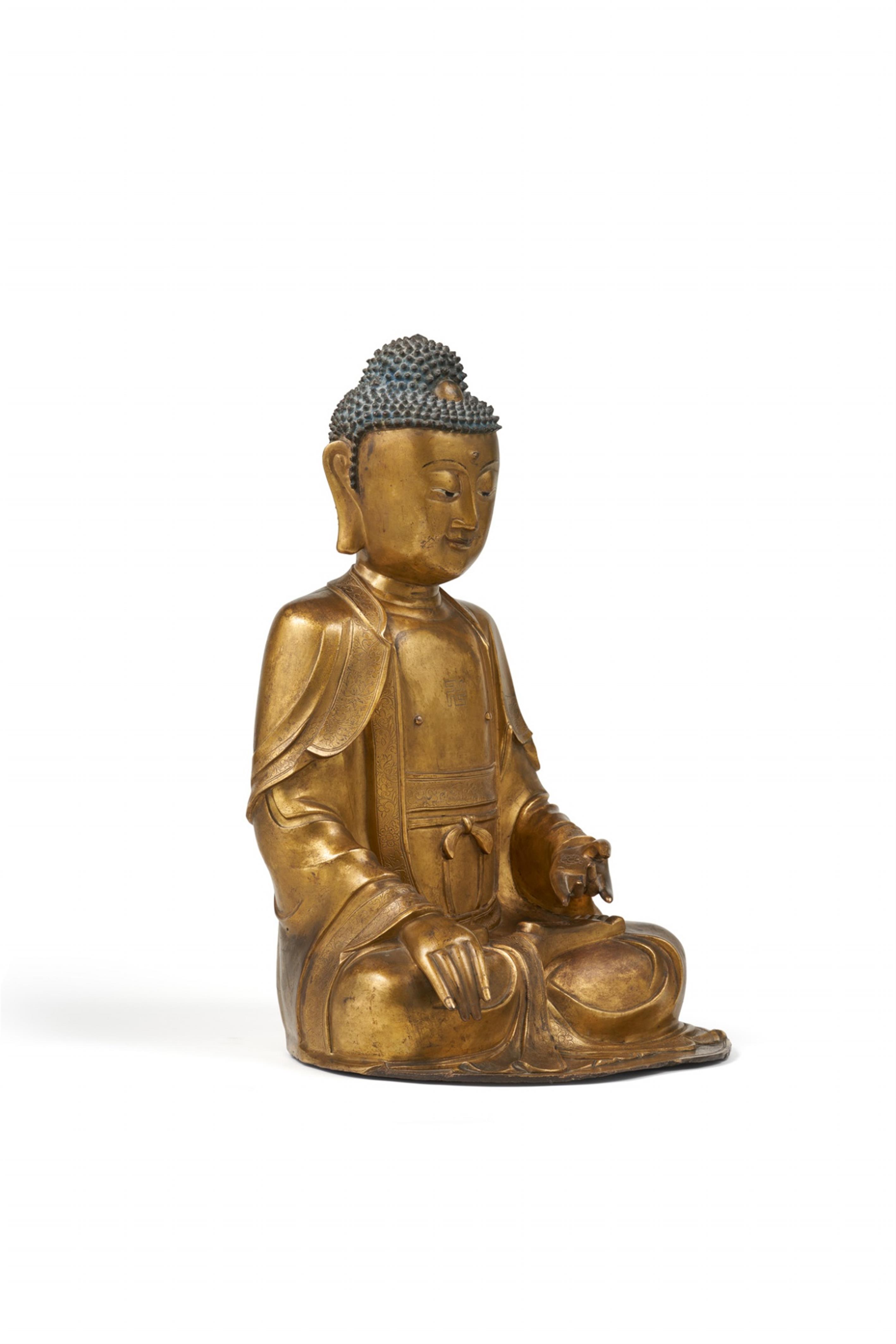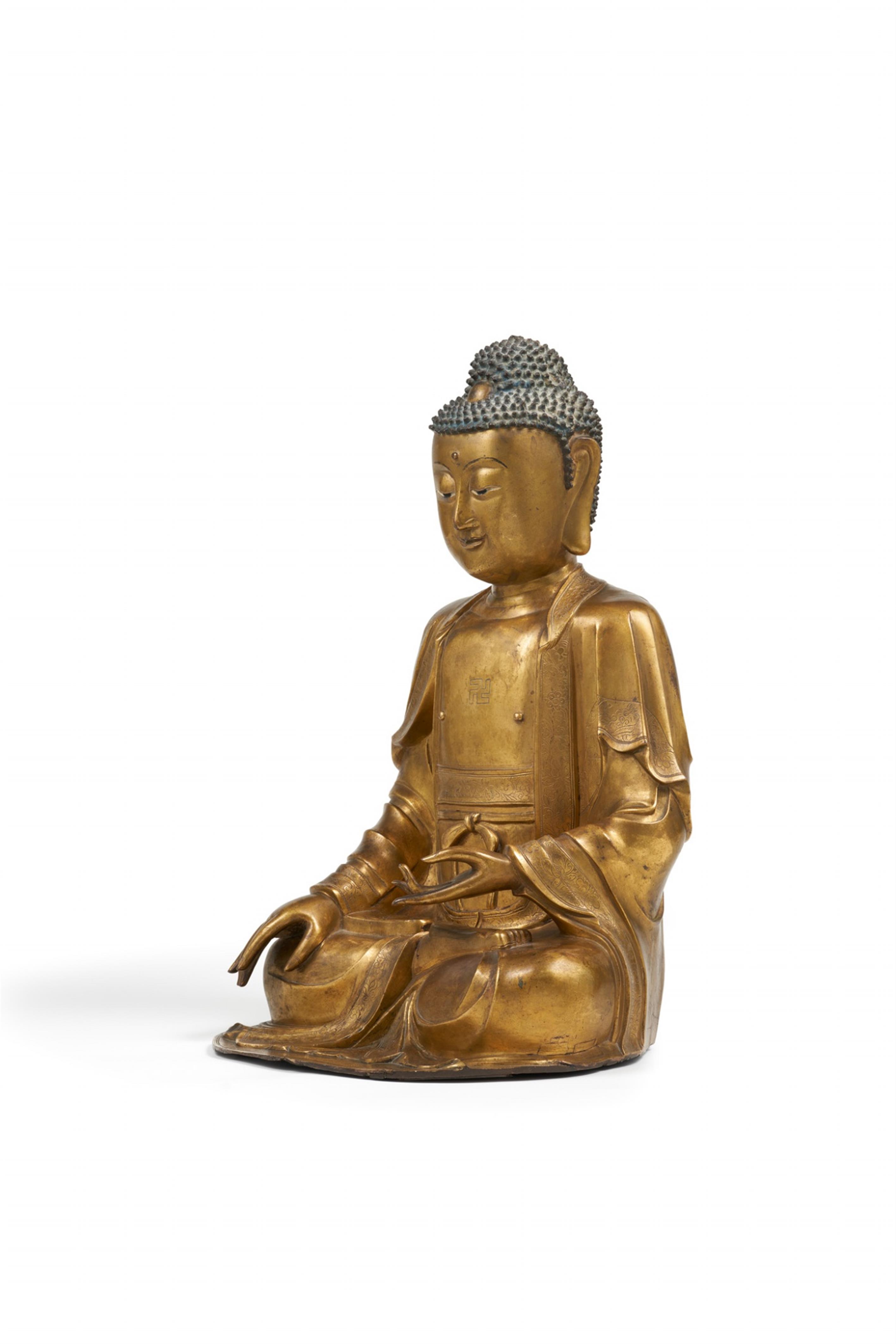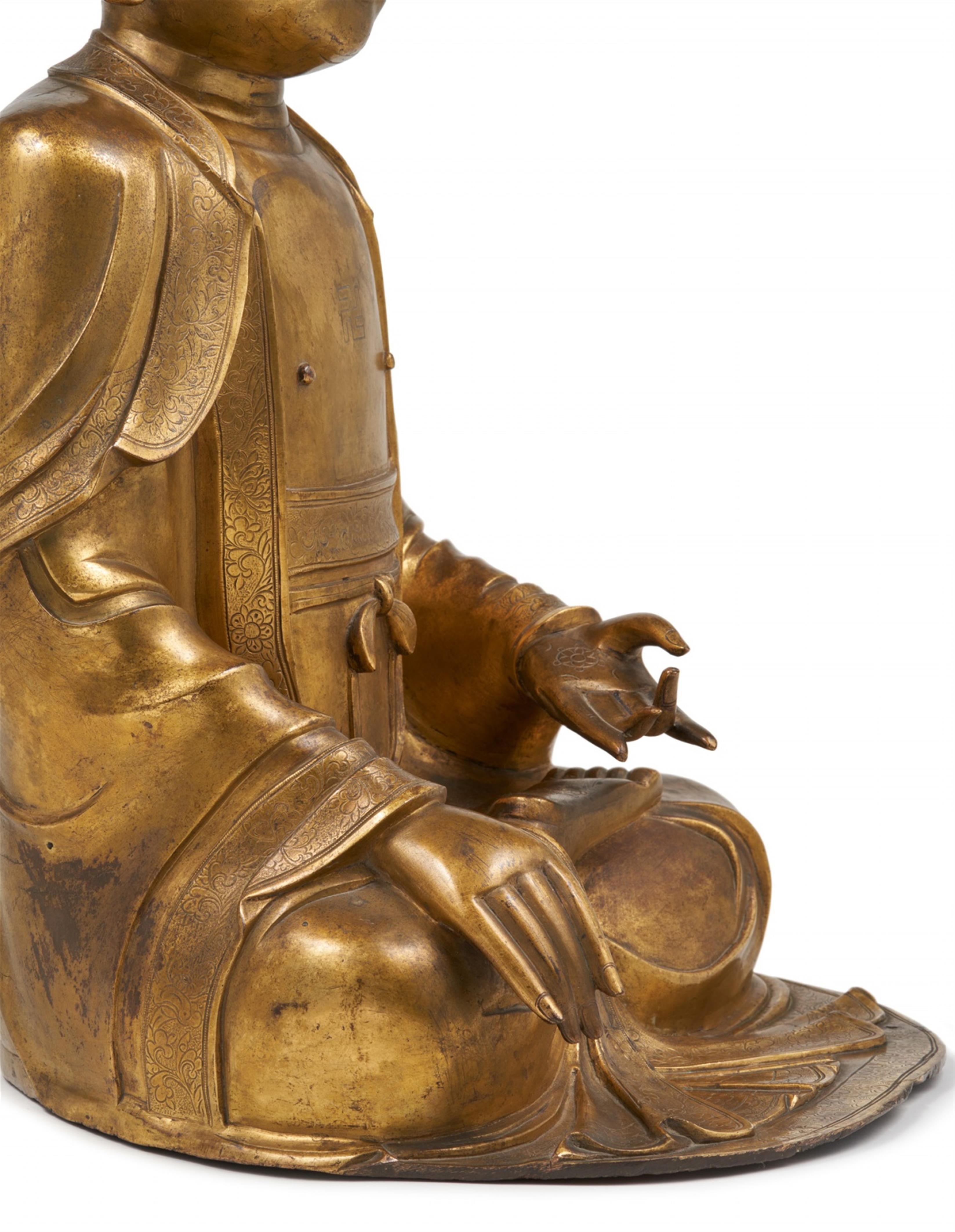A gilt-bronze figure of Shakyamuni. 17th/18th century
Seated in meditation (padmasana), the right hand placed upon the knee, reminiscent of the bhumisparsha mudra, the left hand held forward, the inside of the hands displaying a six-petalled flower. The robes are opened to reveal the chest with an incised swastika and tiny nipples, the antaravasaka (chin. neiyi) is held together at the waist with a belt tied into a bow, while the uttarasanga (chin. shangzhuoyi) and kasaya cover the rest of the body, the hems are engraved with blossoms and scrolls within a thin beaded border. The robe flares out fan-like in front forming a flat base for the seated figure.The large head bears a small urna on the forehead while a larger urna is reserved from the hair curls showing traces of blue pigments and covering the ushnisha.
Height 50 cm
On the basis of the simple garment covering both shoulders, the complete lack of jewellery and the hands held in the mudra of meditation (dhyana) this figure can be identified as Buddha Shakyamuni. He is represented in the pure Han-Chinese style, without any iconographic or stylistic influence of the Tantric or Tibetan Buddhism prevalent at the imperial court. The Buddha's facial features express spiritual serenity.
Such sculptures were generally donated to a Buddhist temple by private persons. They were placed on the large wooden altar, which displayed the main figures of worship, usually a triad of Buddhas or Bodhisattvas. To the sides and in front of them smaller Buddhist figures were randomly arranged. As objects of worship they were sometimes donned with a cloth placed around their shoulders. In this case the Buddha Shakyamuni could also have been flanked by his two disciples Ananda and Kashyapa.
十七/十八世紀 銅鎏金釋迦牟尼佛坐像
結跏趺坐,身著身穿袒右式袈裟,
左手於臍前結禪定印,右手於右膝前結觸地印,
袈裟僅在衣領、袖口、下擺處表現衣紋
來源:瑞士私人收藏
他長袍蔽肩,身無他飾,面容平靜,可見為釋迦牟尼佛。
這類雕像通常是私人捐贈給佛寺的。他們被放置在巨大的木壇上,木壇上是最重要的佛教人物,通常是三個佛陀或菩薩。因此在釋迦牟尼像的兩側很可能是他的兩個門徒阿南達和迦葉帕。
Provenance
Private collection, Switzerland

